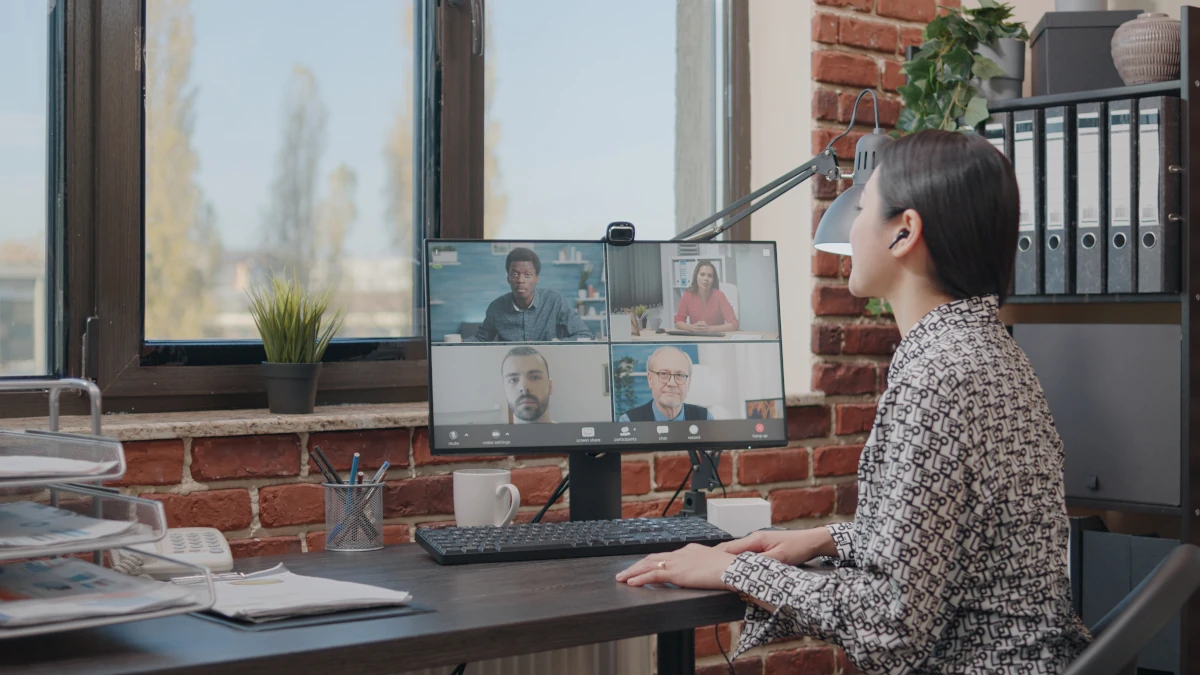Online meetings have become a cornerstone of modern communication, connecting individuals and businesses worldwide with remarkable ease. Behind these seamless experiences lies a sophisticated network of technologies working in unison. From the scalability of cloud computing to the real-time efficiency of WebRTC and the game-changing speed of 5G, these innovations are redefining how we collaborate. As a professional deeply involved in the technical evolution of online platforms, I understand the synergy required to meet the growing demands of users while addressing the industry’s challenges. and with this article let explore how online meetings work.
Cloud Computing: The Backbone of Online Meetings
Cloud computing forms the foundation of online meeting platforms, enabling them to support millions of users simultaneously while maintaining reliability. The cloud infrastructure ensures that platforms like Zoom, Google Meet, and Telepati can handle the complexities of modern communication.
- Data Management and Storage: Cloud servers process video streams, audio data, and shared files in real time, ensuring smooth interactions. Additionally, they securely store meeting recordings and chat logs for future access.
- Dynamic Scalability: Cloud systems dynamically allocate resources to handle sudden surges in usage, such as during global events or large-scale corporate meetings.
- Cross-Device Accessibility: By leveraging cloud infrastructure, users can join meetings from a wide range of devices without requiring powerful hardware.
Challenges: Despite its transformative capabilities, cloud computing is not without hurdles:
- Latency Issues: Delays in data processing can disrupt real-time interactions, impacting user satisfaction.
- Security Concerns: Safeguarding sensitive data stored in the cloud demands continuous innovation in encryption and compliance.
- Cost: Maintaining extensive cloud infrastructure is expensive, often resulting in higher subscription costs for premium services.
WebRTC: Real-Time Communication Made Simple
WebRTC (Web Real-Time Communication) has transformed online meetings by enabling direct audio, video, and data sharing through web browsers without the need for additional software. This technology ensures that users can engage in real-time collaboration efficiently and securely.
- Peer-to-Peer Connectivity: WebRTC establishes direct connections between participants, reducing server reliance and improving performance.
- Broad Compatibility: Its integration across major browsers ensures universal accessibility.
- Ease of Use: Eliminating plugins or additional installations streamlines the user experience.
Platforms such as Google Meet utilize WebRTC to provide seamless browser-based communication, while Telepati leverages it to optimize peer-to-peer connections. By reducing server load and enhancing performance, these platforms deliver high-quality experiences even in challenging network conditions.
Challenges:
- Network Variability: Achieving consistent quality across diverse network environments remains a key challenge.
- Device Compatibility: Ensuring smooth functionality across a wide array of devices requires ongoing updates.
- Security: Robust encryption protocols are essential to safeguard user data during real-time communication.
5G: The Future of Online Meetings
The advent of 5G networks is revolutionizing online meetings, offering unprecedented speed, reliability, and mobility. Regions such as South Korea and urban areas in the United States are already benefiting from 5G’s capabilities, enhancing industries like telemedicine and online education.
- Ultra-High Definition Streaming: With 5G, platforms can support 4K and higher video resolutions, delivering crystal-clear visuals.
- Minimal Latency: 5G reduces latency to near-zero levels, enabling natural, real-time interactions.
- Enhanced Mobility: Improved connectivity ensures high-quality meetings on the go, meeting the needs of mobile professionals.
Platforms that incorporate adaptive streaming technologies are prepared to harness the full potential of 5G, adjusting content quality dynamically to provide reliable user experiences.
Overcoming Industry Challenges
Despite advancements, the online meeting industry faces persistent obstacles that demand innovative solutions:
- Infrastructure Gaps: Limited internet access in remote or underserved regions hampers equitable participation.
- Data Privacy: Ensuring compliance with global regulations like GDPR and HIPAA requires constant vigilance.
- Scalability: Supporting millions of simultaneous users without performance degradation necessitates advanced resource management.
- Compatibility: Platforms must ensure seamless operation across an ever-expanding range of devices and operating systems.
Driving the Future of Communication
The integration of cloud computing, WebRTC, and 5G marks a new era for online meetings. These technologies work together to create platforms that are scalable, efficient, and accessible, enabling users to connect effortlessly across the globe.
As an industry insider, I’m excited about what lies ahead. Imagine virtual environments so immersive they rival in-person interactions or platforms that adapt seamlessly to user needs in real time. These innovations are not just tools for communication but catalysts for how we collaborate, learn, and grow in a digital-first world. By embracing these advancements, we’re building a future where connectivity knows no boundaries, ensuring that everyone can participate in the conversation, no matter where they are.


